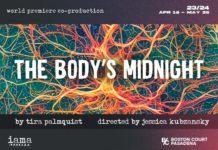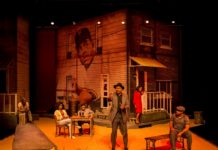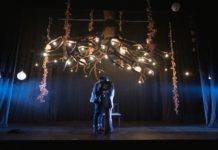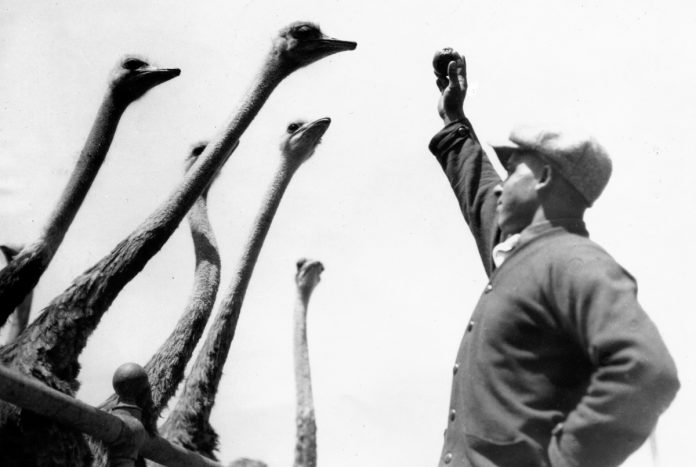
It is probably hard to imagine just how popular ostrich feathers were a hundred years ago. Today, women’s fashions come and go with each new season.
In the late 1800s and early 1900s, the ostrich feather symbolized wealth and upper-class refinement much the way a luxury automobile does today. The Cawston Ostrich Farm catalog claimed “ostrich feathers are now as staple as diamonds,” citing they “do not fluctuate in popularity like furs, and are constantly used.”


Women’s ostrich feather fashion maintained its popularity in America for over 50 years!

The many oddities of the world’s largest bird also appealed to the public, especially vacationing tourists at South Pasadena’s Cawston Ostrich Farm.
Before Edwin Cawston brought ostrich farming to America, little is known about the world’s largest bird except in product advertising.

Advertisers often used specific characteristics of the ostrich to draw attention to their products.
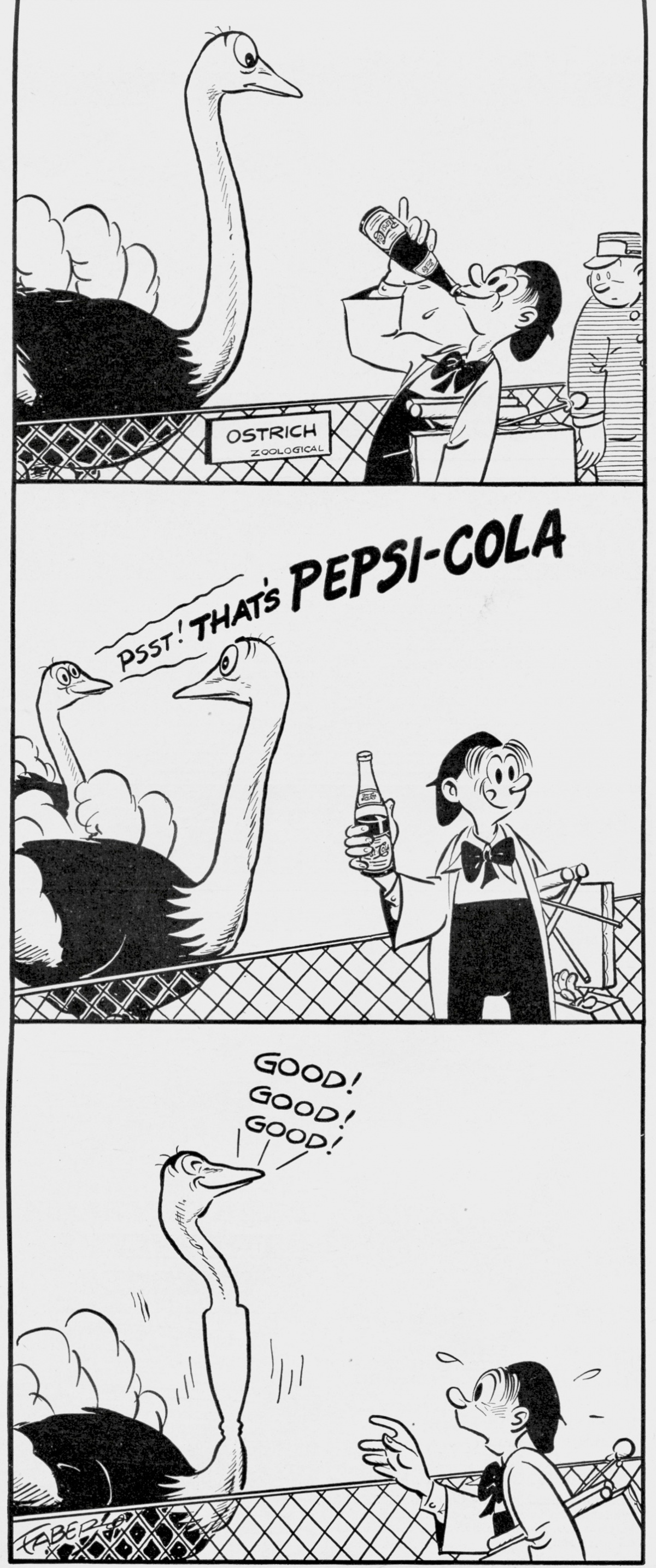
Ostriches have voracious appetites. They’ll eat anything small, and that gets near them. At the Cawston Ostrich Farm, guests were warned to put away their diamond jewelry because ostriches are particularly fond of sparkling objects.
They also prefer Pepsi over Coca Cola.

The Dude Masher proved the ostrich could also be oh so cool.
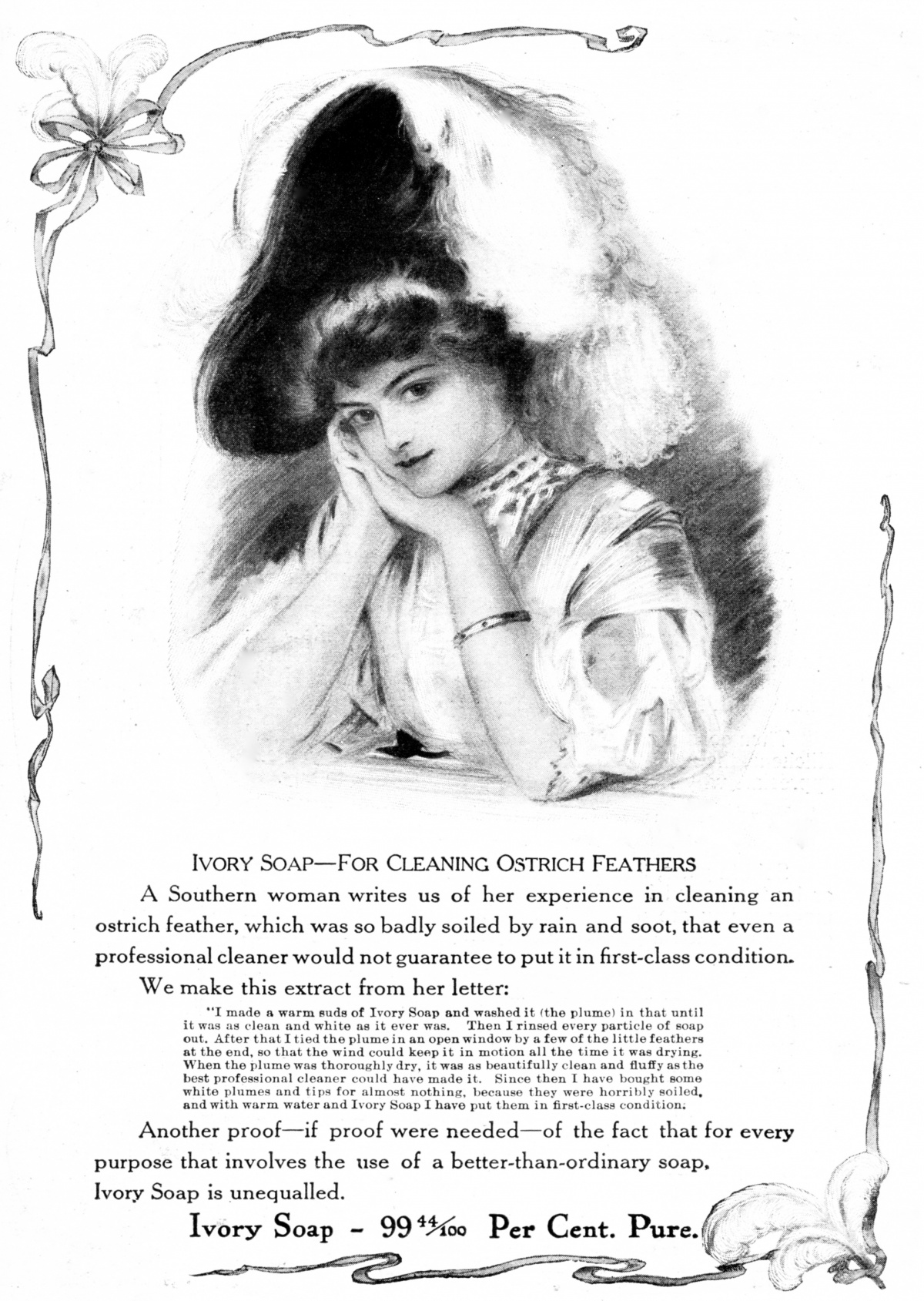
Merely the presence of an ostrich placed in newspaper or magazine ads could draw attention to the product or service offered. Did you know that Ivory Soap can also be used to cleanse your ostrich feather boa?

In 1923, an ostrich race took place in Anaheim, California, in front of a huge crowd. Public spectacles like this were popular in the late eighteenth century. Another famous race took place at Chutes Park in downtown Los Angeles between an airship and an automobile. The automobile broke down early in the race and nearly beat the nimble dirigible in a mad dash to The Raymond hotel.
Chariot races were also popular during the early years of Pasadena’s Tournament of Roses festivities. One year two ostriches were used instead of a horse. Its awkward appearance and refusal to go in a straight line caused the crowd to roar with laughter.

In the above photo postcard, you are witnessing a scene from Cawston’s controversial human/ostrich breeding experiment. NOT! The ostrich farm attendant is holding the male ostrich still while its choice white feathers are being removed using clippers.
Imagine receiving the above photo post card from a friend on vacation visiting the west coast. You’d probably declare, “So that’s what they do out there in California!”
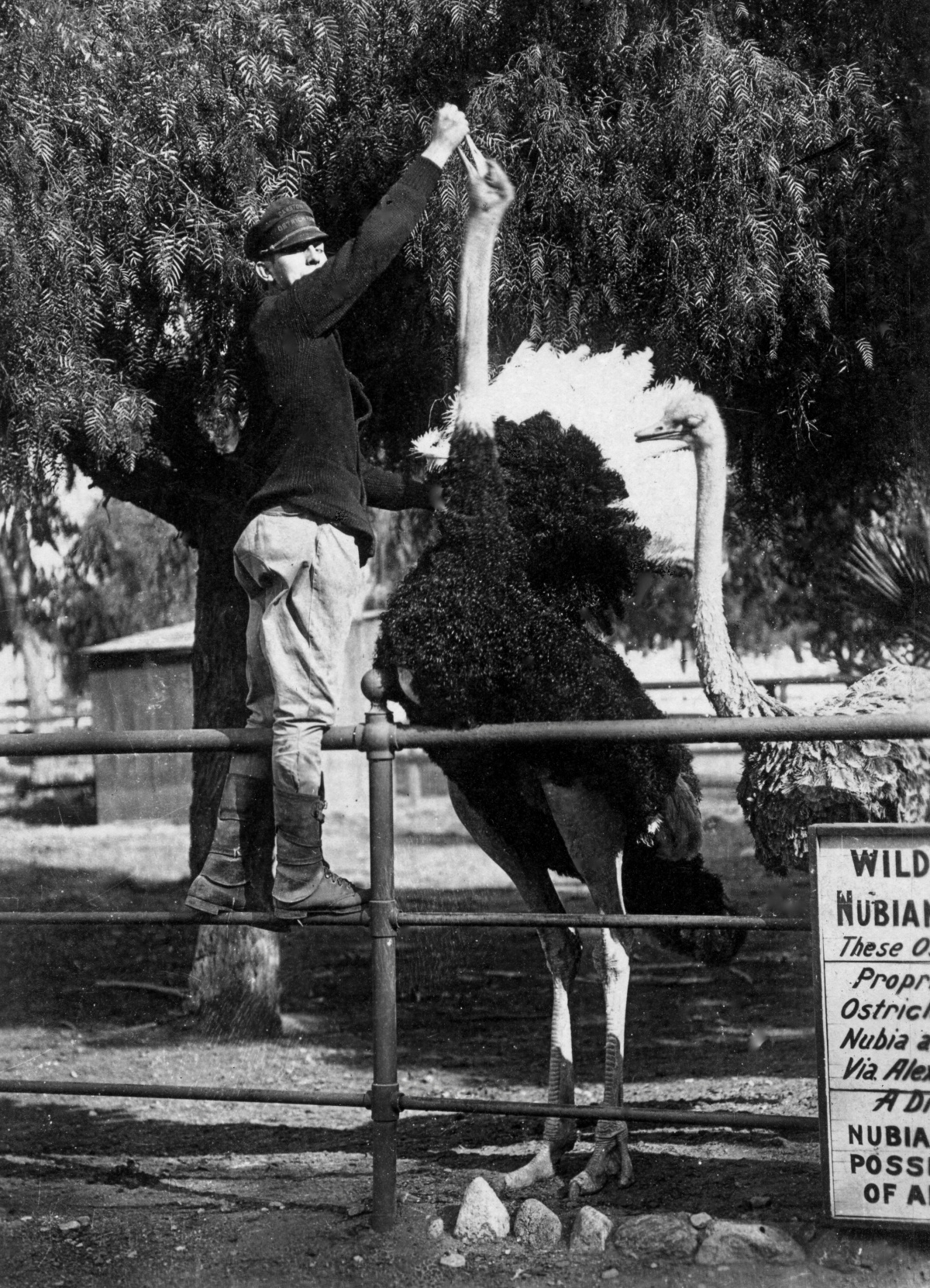
The ostrich in the photo above is taller than a human. Notice the beautiful plumage of the male ostrich. His legs are pretty sexy too!

Did you know that an ostrich’s brain is no bigger than the size of its eyeball?
Ostriches are also strong and potentially dangerous. And yes, the kick of an ostrich is powerful enough to kill you under certain circumstances. On the other hand, its feet are described as the kind only a mother could love.
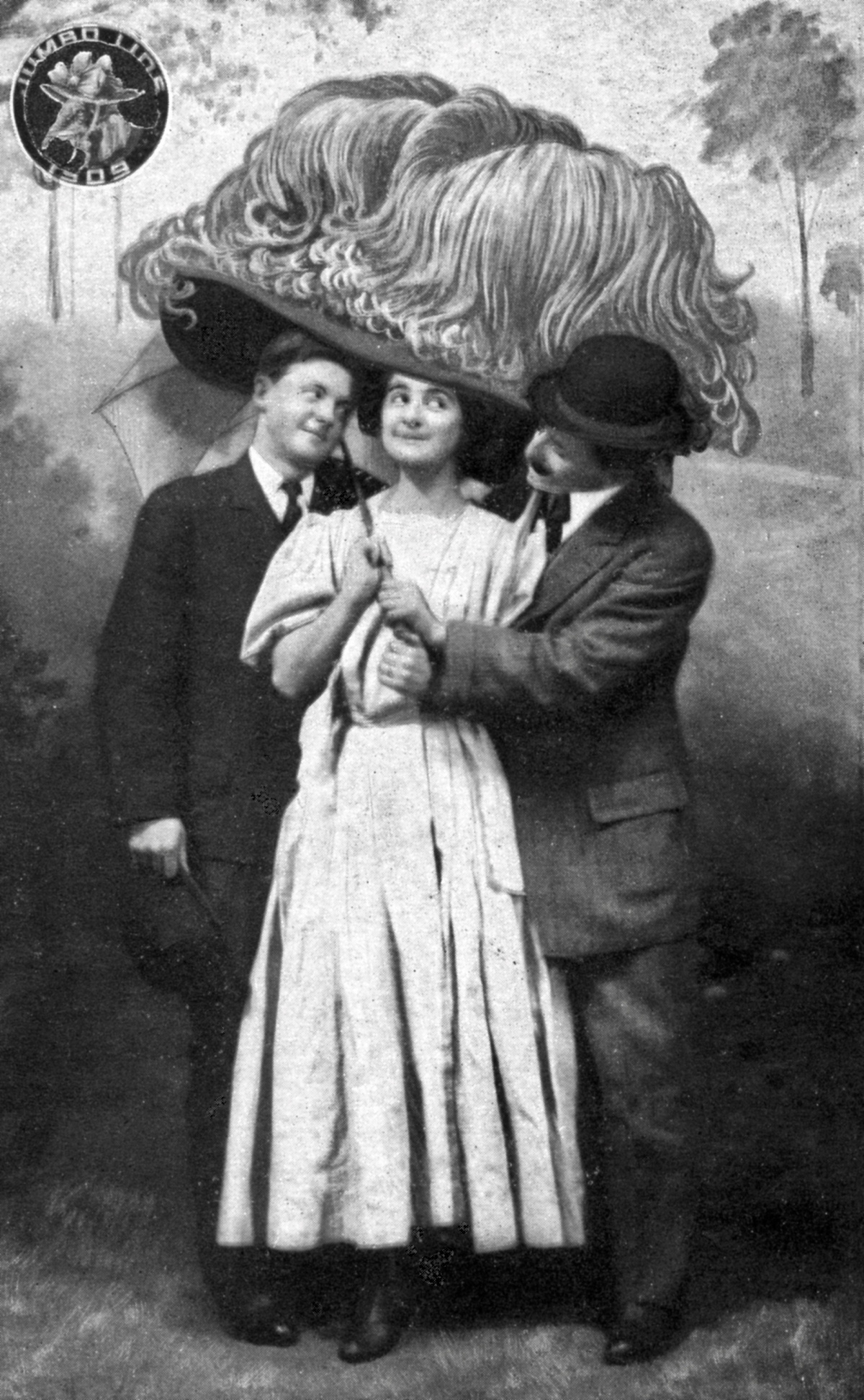
In the above whimsical vintage postcard, two men try to get under the woman’s broad-rimmed hat to win her affections. On the reverse side of the card it reveals the man who failed did not remove his hat like a gentleman.

The “courting pen” at the Cawston Ostrich Farm is a place where the ostriches sometimes performed an extraordinary dance. On occasion, they displayed bizarre mating rituals – much to the delight of the guests.
My family had a strange aunt named Edna, who engaged in peculiar dances of her own. Don’t ask.

My uncle Arthur was quite an odd bird too. But he sure could dance!
Throwback Thursday is written and produced by Rick Thomas


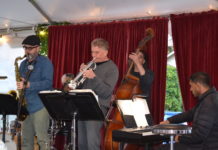


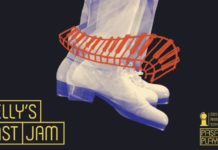

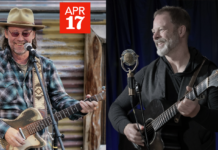
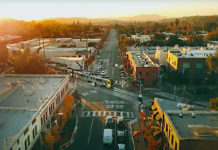
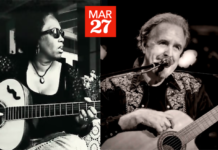
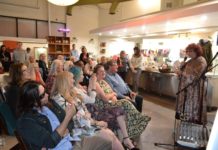



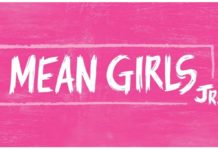

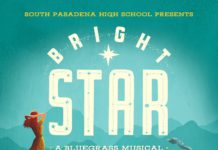



.png)





